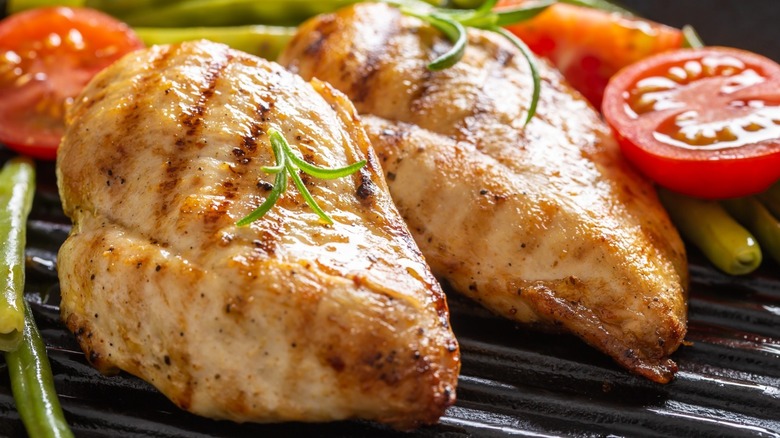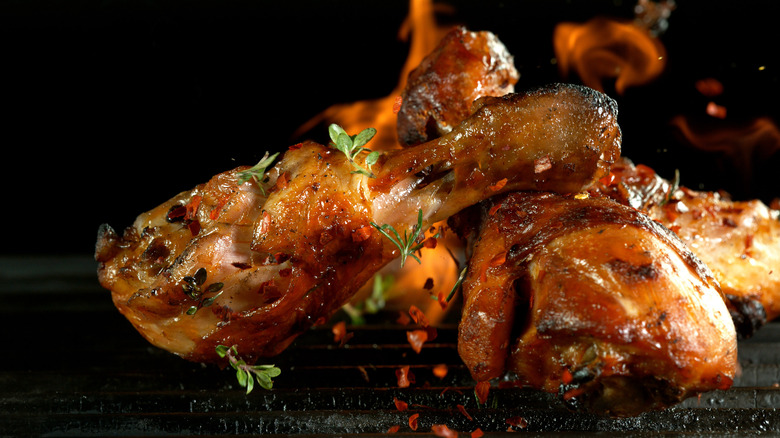The Biggest Mistake People Make When Grilling Chicken
Inflation is up 8.6% from a year ago, according to the most recent Consumer Price Index (CPI). But if you've done any shopping at all in the past several months, you've probably already come to recognize that inflation does not hit all categories of consumer goods and services equally. To wit, gas prices are up nearly 50% since last year at this time. While AAA estimates that 43.6 million Americans are planning to travel by car to celebrate the July 4th weekend — an uptick of 8% over last year's number, per The New York Times, no one would blame you if you were to wave the metaphorical white flag in the direction of your local gas pump and just resolve to stay put.
In fact, with grocery prices up a "mere" 10% — remember, that's "just" 2.6% over the current rate of inflation – grilling out at home could actually help you keep some of that money in your wallet, where it belongs. The question then becomes what to grill. With fruit and vegetable prices up slightly less than those for animal protein (via CPI), you can have all sorts of fun with grilled fruit and plant-based "charcuterie." But if chicken is still within your budget, you're in luck because we recently spoke to Perdue's Executive Chef, Chris Moyer, who gave us the low-down on best practices when it comes to grilling with chicken, including the silly mistakes one can easily avoid, provided you know to do so.
Best chicken grilling practices, revealed by an expert
If you're looking to contain your July 4th-related spending, serving chicken as your main course makes for a logical choice given that its been hit slightly less hard by inflation than ground beef, per the American Farm Bureau Federation. Perdue's Executive Chef, Chris Moyer, said "chicken is one of the tastiest and most versatile proteins you can grill." Now, we get that he's biased, but at the same time, we also assume he legit knows at least a thing or two about how to get the best results from grilling chicken. And one of the biggest mistakes people make when grilling chicken is to use "heat or a flame that is too high, which can result in burned or overcooked chicken."
It's not time, but rather, temperature that is key to grilling success, Moyer explained. Specifically, although the USDA recommends cooking all chicken to at least 165 F, Moyer thinks you're better off using 170 F for boneless breasts and thighs and 180 F for dark meat cuts. The best way to ensure that your various chicken parts will grill to the right temperature without burning is to "take advantage of grilling using indirect heat."
Using indirect heat means positioning meat "across from the flame instead of directly over it." Another option would be wrapping the chicken in foil until the last moment. In either case, Moyer suggests "steering clear of sugary sauces or marinades, which can burn when on the grill."

